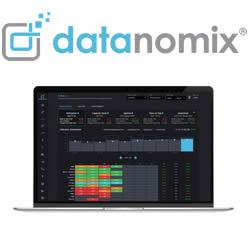Manufacturing Day 2025: The AI-Native Factory Arrives
On Manufacturing Day 2025, plants across the country will welcome students, educators, and community leaders. It’s a fitting moment to recognize a simple truth: AI isn’t looming on the horizon anymore; it’s already on the line as a teammate, helping people make better decisions, faster.
On Manufacturing Day 2025, plants across the country will welcome students, educators, and community leaders. It's a fitting moment to recognize a simple truth: AI isn't looming on the horizon anymore; it's already on the line as a teammate, helping people make better decisions, faster.
From automation to augmentation
For years, the AI conversation in manufacturing was framed around replacing work. That frame is outdated. The real productivity gains are coming from augmentation: algorithms that surface anomalies for quality techs, copilots that draft work instructions for supervisors to approve, planners that propose schedule changes when materials slip, and maintenance models that flag failure probabilities before they cascade into downtime. None of these use cases erase human judgment, they accelerate it, so teams can spend more time on root cause, design intent and process improvement.
From projects to platforms
The biggest determinant of AI ROI isn't the cleverness of a single model; it's the data foundation underneath it. Manufacturers that connect design, engineering, production, and field data into a coherent "digital thread" give AI the context it needs to reason across the lifecycle: Is this tolerance drift tied to an ECO? Did a supplier substitution change the routing? Are service returns signaling a training gap? When data flows, AI can move from isolated predictions to system-level recommendations.
From dashboards to agents
Dashboards tell you what happened; AI agents help with what to do next. In practice, that looks like task-oriented agents that watch queues, reconcile BOM deltas, draft change rationales, propose parameter windows for a new run, or generate first-pass work instructions - all with human sign-off and traceability. Think of it as "decision pre-work" that clears operational fog without removing accountability.
Governed, interoperable and trustworthy
As organizations scale AI, trust is a feature, not an afterthought. That starts with clear guardrails - purpose specification, data lineage, risk controls, evaluation criteria and incident response - mapped to recognized frameworks. The U.S. National Institute of Standards and Technology (NIST) has published an AI Risk Management Framework and a Generative AI Profile that manufacturers can adapt to operational contexts, from shop-floor copilots to supplier-facing agents. Using common language for risk identification and mitigations helps technical and nontechnical leaders align on where to deploy, how to monitor and when to stop.
Regulation and circularity by design
AI is also a force multiplier for compliance and sustainability. With the EU's Ecodesign for Sustainable Products Regulation (ESPR) in force and Digital Product Passports advancing, the requirement is shifting from "prove it later" to "design it in from the start." Manufacturers will need to trace materials, component provenance, and environmental impacts across the lifecycle. AI can help engineers interrogate requirements, simulate tradeoffs, and generate documentation as a by-product of normal work, turning compliance from a scramble into a capability.
The adoption reality
Hype aside, adoption is real and measurable. Recent industry surveys show that roughly a third of manufacturers are already using AI/ML at the facility or network level, with many more deploying generative AI or running proofs of concept. Progress won't accelerate without better data plumbing and clearer governance, but the shift from experiments to embedded capability is underway.
A historic talent moment
For students and career-changers, this is an extraordinary opening. The U.S. could need millions of new manufacturing employees over the next decade, and a significant share of those roles may go unfilled if we don't close the skills gap. The future belongs to teams that blend craft and code: technicians who can read a waveform and a confusion matrix, engineers who can interpret a control chart and a model card, and planners who can translate operational intent into prompts an agent can act on.
Skills to focus on
Thriving in AI-native factories will depend on three skill areas: data literacy across the digital thread, the ability to ‘speak AI' through promptcraft and simulation, and the judgment to apply ethical reasoning when evaluating models. Together, these literacies ensure operators, engineers, and executives can work from a common language of data, risk, and accountability.
Putting it into practice
Here's how to start turning AI potential into measurable impact:
• Focus on high-impact use cases. Pick two or three areas - such as reducing quality escapes, improving throughput, or cutting energy use - and define how success will be measured.
• Connect your data. Link design changes, machine states, supplier lots, and service feedback so models can see cause-and-effect relationships.
• Establish guardrails upfront. Define purpose, provenance, evaluation methods, and escalation paths before deployment to ensure trust and accountability.
• Build cross-functional teams. Pair engineers, operators, and data specialists, and rotate them through playbooks so lessons learned scale across the plant.
The bottom line
AI won't replace the ingenuity that built this industry. It will reward it. The plants that win won't be the ones with the most models but those where people, data, and decisions are most connected. Where AI is embedded in the everyday work of making things. On Manufacturing Day, invite the next generation to see that future up close - and hand them a role in building it.
Manufacturing thrives on people who are ready to innovate and push boundaries, but success won't come from technical skills alone. Adaptability, collaboration, and ethical reasoning will determine how well engineers thrive in environments where workflows are rapidly changing. Creativity, collaboration, and sound judgment remain irreplaceable. AI wasn't the first innovation to upend this industry, and it won't be the last.
Featured Product

